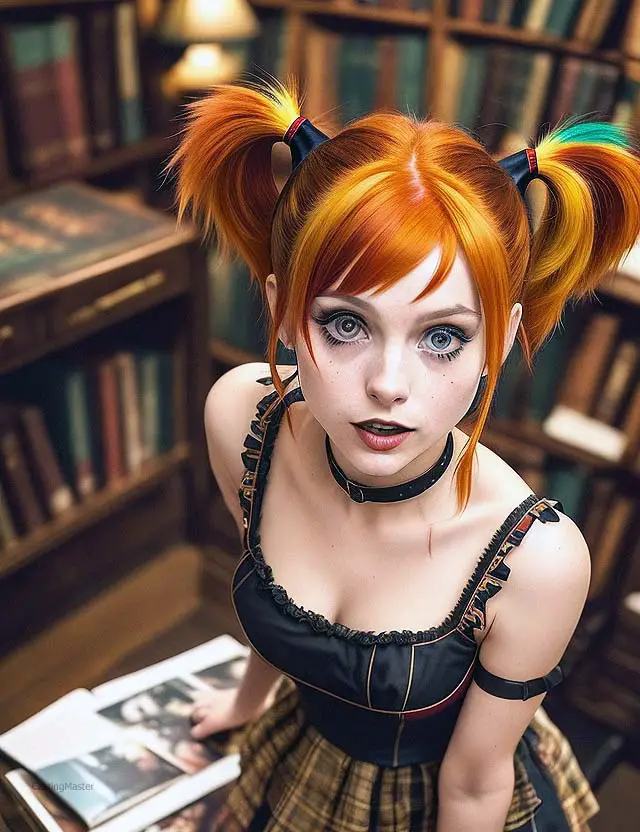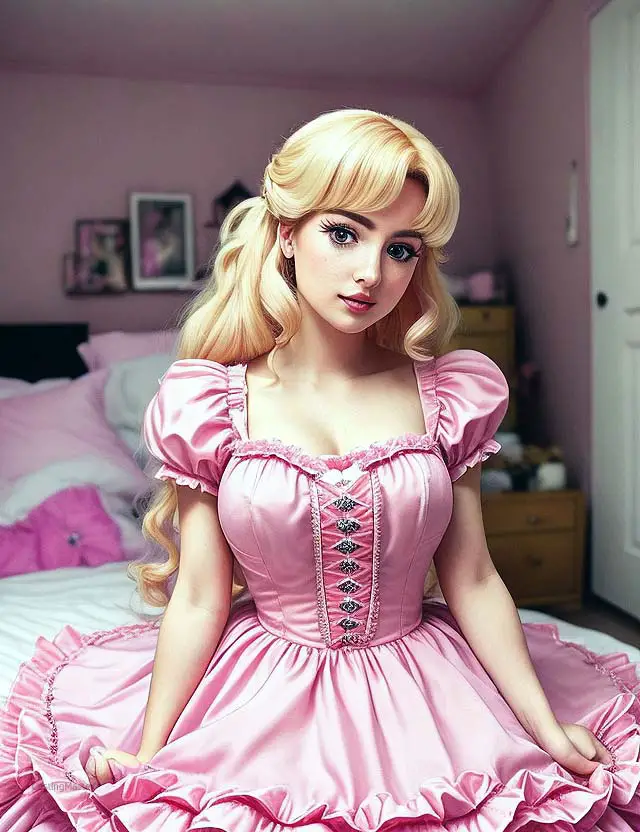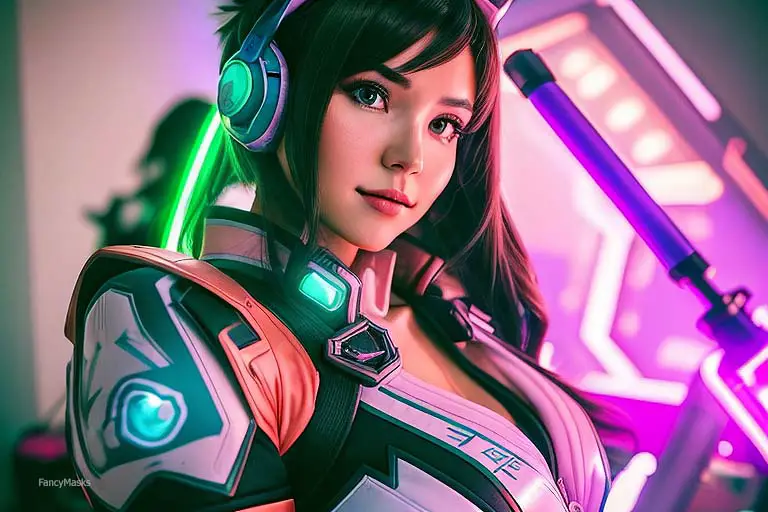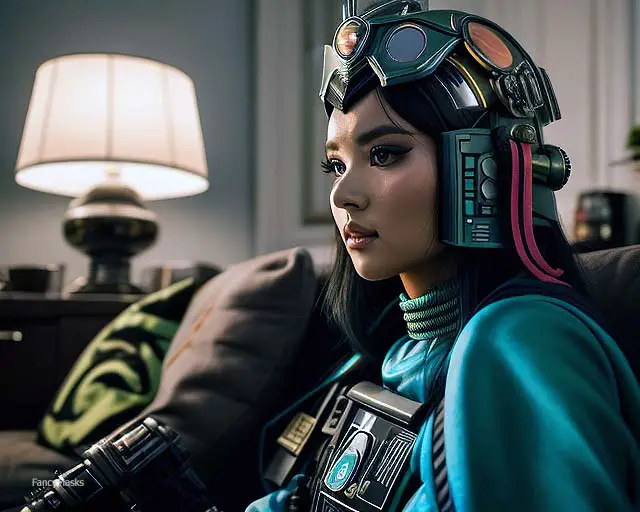The Beginner’s Guide to Cosplay: A Detailed Introduction
The Definition of Cosplay
Cosplay, or costume play, is the practice of dressing up as a fictional character from a book, comic book, movie, anime, manga or video game. It involves creating costumes and props that are as accurate as possible to the character you are portraying. Cosplayers often attend conventions where they can showcase their work and meet other enthusiasts.
A Brief History of Cosplay
The roots of cosplay can be traced back to science fiction conventions in the 1930s and 1940s. Fans would dress up as their favorite characters from science fiction literature. The modern form of cosplay emerged in Japan in the 1980s during anime and manga festivals where fans would dress up as characters from popular series.
From there it spread throughout the world with increasing popularity over the years. Today, cosplay is an integral part of pop culture with millions of fans worldwide creating stunning costumes.
The Importance of Cosplay in Pop Culture
Cosplay has become an important component in pop culture because it allows people to express their creativity and imagination through crafting detailed outfits that represent a beloved character. It also provides an opportunity for fans to connect with one another and share their passion for different fandoms.
Moreover, cosplay has become a significant aspect of marketing strategies for media franchises. Many official events now include cosplayers who promote the brand by dressing up like characters from movies or TV shows.
In recent years, cosplay contests and competitions have become more prevalent at events around the world. These contests showcase some truly impressive craftsmanship and creativity put into making these costumes.
The impact that cosplay has on pop culture is undeniable. It brings people together with shared interests while providing endless opportunities for creative expression – making it more than just a hobby but a lifestyle for many enthusiasts.
Basics of Cosplay
Choosing a Character to Cosplay: Be True to Yourself
The first step in cosplay is choosing the character you want to portray. Don’t be afraid to choose a character that resonates with you, even if it’s not a well-known one. You’ll have more fun if you feel passionate about the character and their story.
It’s important to remember that cosplay is about expressing yourself, so don’t worry too much about what others will think. You are the one who needs to feel comfortable in your costume.
Researching and Gathering Reference Materials: A Key Step
Before starting your cosplay project, it’s essential to do your research. Collect reference images of the character from different angles and study every detail of their costume and props.
Look for online cosplay communities where people share tips, techniques, and photos of their work. These communities can also provide valuable feedback on your progress.

Budgeting for Your Cosplay Project: Financial Planning
Cosplay can be an expensive hobby, but it doesn’t have to be. Start by setting a budget for your project and prioritizing the most important pieces first. Consider alternatives like thrift store finds or repurposing items from around the house instead of buying everything new.
If you need specialty items like wigs or contact lenses, shop around online for deals or wait for sales before making purchases. Keep track of how much money you’re spending as you go along so that you don’t end up overspending.
Basic Sewing and Crafting Skills Needed for Cosplay: Practice Makes Perfect
Sewing is a fundamental skill required for most costumes, but there are other crafting skills necessary too- such as painting, prop-making (sculpting), armor-making (welding) etc.. If you’re new to sewing, start with something simple like a skirt or basic top to get a handle on the basics. There are plenty of online tutorials and classes available that can help you learn.
Even if you’re not confident in your skills, don’t be afraid to try new techniques. Practice makes perfect, and the more you work on your cosplay projects, the better your skills will become.
Starting Your First Project
Deciding on the level of difficulty for your first project
When starting out in cosplay, it’s important to not get too ambitious with your first project. While there are plenty of amazing and complex cosplays out there, it’s best to start small and work your way up. Choosing a character that has a relatively simple outfit is a good way to start.
This will give you the opportunity to develop your skills without overwhelming yourself. Think about what you’re comfortable with in terms of crafting and sewing skills.
If you’re new to sewing, for example, it might not be the best idea to jump into something with lots of intricate stitching or complicated patterns. Choose something that is relatively straightforward and easy to assemble.
Creating a timeline for your project
Once you’ve decided on your cosplay character and have an idea of what materials and tools you’ll need, it’s time to create a timeline for your project. This will help keep you organized and on track as you work through each step of the process. Start by determining when you want to have the cosplay finished by (maybe for an upcoming convention or event).
Then divide the time between now and then into manageable chunks. For example, if you have three months until your deadline, break that down into three one-month chunks or six two-week chunks.
Within each chunk of time, make a list of goals that you want to accomplish by certain dates. These goals could include things like buying materials by a certain date or completing certain sections of the costume by another date.
Choosing the right materials and tools
Choosing the right materials and tools is essential when creating a cosplay costume. You want something that looks accurate while also being durable enough to withstand wear-and-tear from conventions and events.
Start by researching online about what fabrics are appropriate for your character’s outfit. Look for fabrics that have the right color and texture, and are easy to work with.
You’ll also need to consider things like thread, zippers, buttons, and any other hardware that you might need. Some tools you may need include a sewing machine (if you’re planning on sewing the costume yourself), scissors, pins, measuring tape, a hot glue gun (if you’re planning on doing any non-sewing parts of the project), and a heat gun (if you’re working with materials like foam or thermoplastics).
Rarely Known Small Details in Cosplay
Using Reference Images
One of the most important aspects of creating an accurate cosplay is gathering reference images. This involves finding pictures or screenshots of your character from different angles so that you can see all aspects of their outfit.
When searching for reference images, look for ones that show different details such as stitching patterns or any logos on clothing items. Additionally, try to find images from various angles so that you can see how certain pieces fit together.
Non-Traditional Materials
While traditional fabrics work great for many cosplay costumes, non-traditional materials can be used to add some extra flair or realism to your cosplay. For example, if your character has armor or weapon props made out of foam or thermoplastics such as Worbla can be used.
You can also use LED lights or fiber optic cables to create special effects like glowing eyes on masks or weapons. Additionally using everyday objects such as PVC pipes to create props is very common in cosplay.
Cosplay Makeup Tips
Makeup plays an important role in bringing a cosplay costume together. Whether it’s just basic facial make up for anime characters’ eyes/lips/cheeks makeup are essential for those who wants look fantastic in their cosplays.
Start by researching images of the character’s face to get an idea of what their makeup looks like. Look for things like eyeshadow colors, lipstick shades, and how the character’s eyebrows are shaped.
Next, practice applying makeup to create similar looks on your own face. This way you can get a good idea of what works and what doesn’t before you try it on your cosplay day.
Wigs
Using wigs is a common practice in cosplay since the hair of most characters in anime, comics or movies are different than our natural hair. Choosing a high-quality wig is essential to complete the look of your cosplay character.
When choosing a wig, make sure it matches the color and style of your character’s hair as closely as possible. Synthetic wigs are cheaper but real human hair wigs offers better quality and gives more realistic appearance.
Take care of your wig by brushing it regularly with a brush designed specifically for wigs. Keep it away from heat sources when not wearing them and spray some hairspray to keep them in place while wearing them in conventions or events where there will be crowds among you.
Understanding Different Types of Cosplay
Anime/Manga Cosplay: Bringing Your Favorite Characters to Life
Anime and manga cosplays are some of the most popular costumes among cosplayers. From Naruto to Sailor Moon, there is a range of anime/manga characters to choose from.
Some popular anime series you can draw inspiration from include One Punch Man, Attack on Titan, and Dragon Ball Z. When creating an anime/manga costume, it’s essential to pay attention to the details.
Anime costumes tend to be brightly colored and feature elaborate designs and hairstyles. You should gather plenty of reference images and take note of any details that may be tricky to recreate.
To create an anime/manga style costume or prop, you can start by using materials such as foam, EVA or worbla for blocking out shapes. You can also use fabrics like cotton, spandex or polyester for the clothing pieces depending on the design.
Comic Book Cosplay: From Page to Reality
As comic book movies continue to dominate the box office scene, it’s no surprise that comic book cosplay is becoming increasingly popular in conventions all over the globe. From Marvel heroes like Spider-Man and Iron Man to DC characters like Batman and Wonder Woman – there’s a range of comic book characters you can bring into reality through cosplay. When creating a comic book-style costume or prop, it’s important first to collect reference images that show off all angles of your chosen character so as not to miss any details while recreating your outfit.
Creating comic-book-style costumes often involves layering different materials such as spandex suits with foam armor pieces for bulkier costumes. This creates not only visual distinction but texture too which adds depth into your costume design.
Niche Subtopics in Cosplay: Going Above & Beyond
While Anime/Manga cosplay and Comic Book cosplay may be two of the most popular themes, there are still a lot of niche subtopics that you can explore. – Crossplay: This involves cosplaying as a character of the opposite gender.
Pulling off a crossplay requires dedication to details such as makeup, voice and mannerisms. – Group Cosplays: This involves creating a costume ensemble with other individuals to form a group.
It is also important to coordinate with your fellow cosplayers and make sure everyone’s costumes or props are in sync. – Historical or Period Costumes: Researching historical periods and trying to recreate it through your costume needs attention to detail, accuracy and authenticity.
Rarely Known Small Details in Cosplay
While cosplay is mainly about having fun while creating your favourite characters, little details can make all the difference when it comes to standing out. These small details can include things like adding weathering effects onto your armor pieces, sculpting intricate details onto props or adding LED lights into your costumes for an extra pop. Make sure you take care of small factors like ensuring that seams on garments are properly finished, investing in good quality fabrics for both clothing pieces and props so they last longer; these factors can make all the difference if you want your costume to be near perfect.
Conclusion
Cosplaying is more than just dressing up – it’s about bringing our favorite characters from different mediums into reality. With the right planning and execution, anyone can create amazing costumes that truly bring their chosen character(s) into life. Whether you’re a beginner or have been doing this for years now, there’s always something new you can learn in this ever-growing community of passionate individuals who share the same interest as yours!




